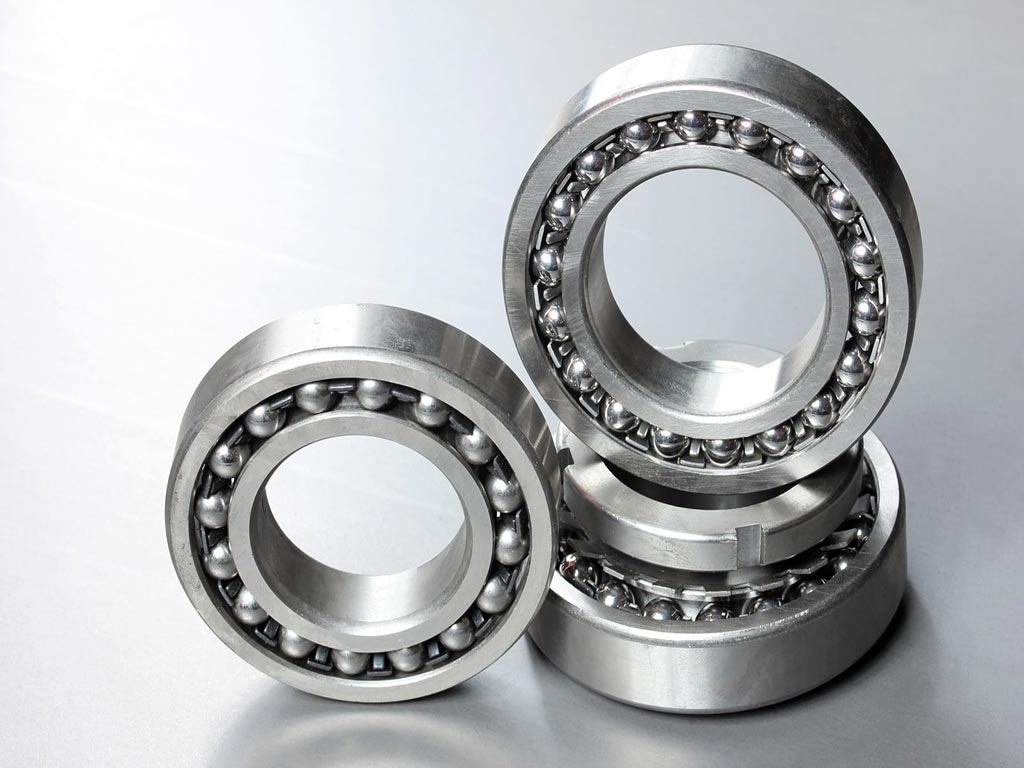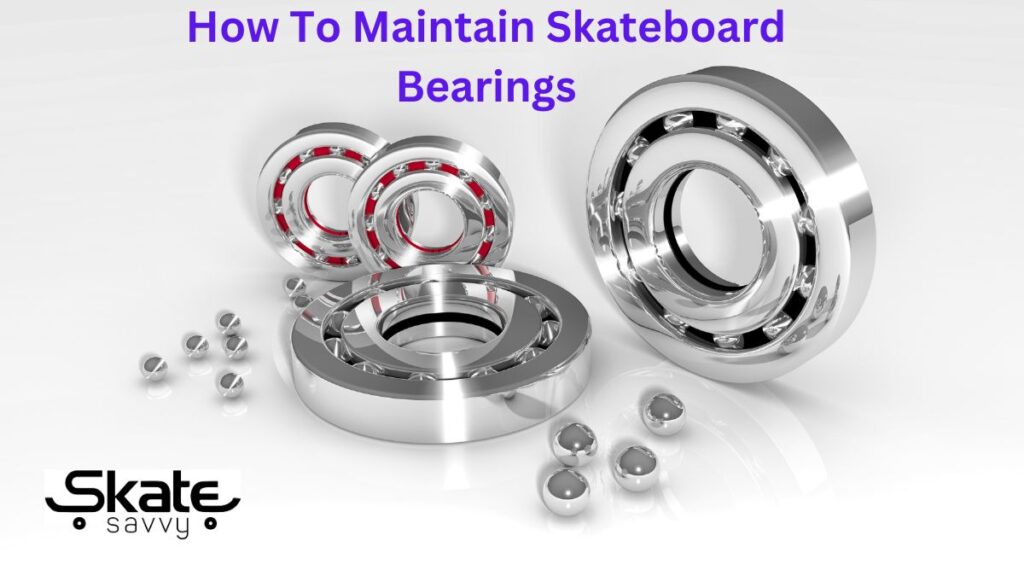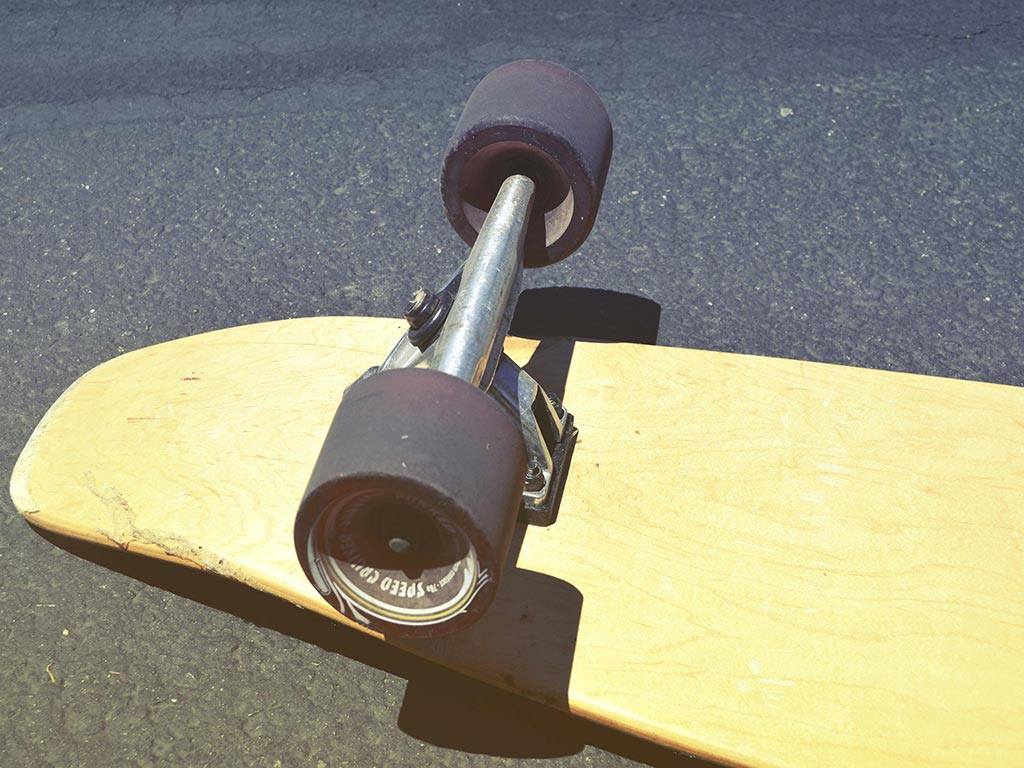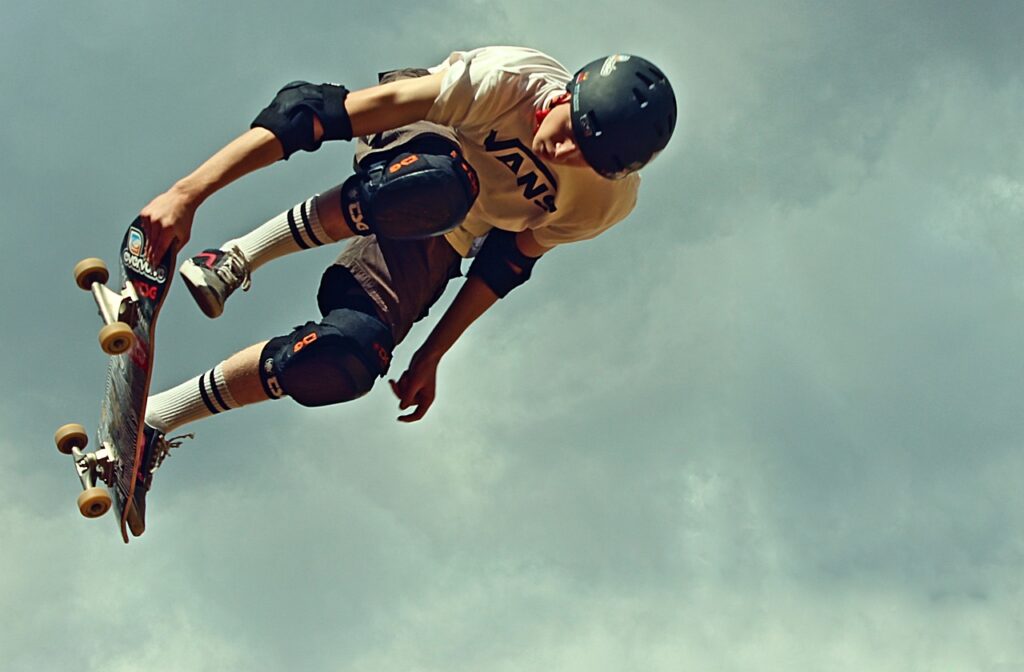How often do you consider the importance of maintaining your skateboard bearings? The integrity of your ride depends significantly on these small yet crucial elements. Skating smoothly isn’t just about the deck’s design or the wheels’ size; well-maintained skateboard bearings play a more prominent role than you may realize.
Just as our bodies need tender love and care, so do the parts of our trusty skateboards. Skateboard bearings often remain under the radar, forgotten until something starts feeling off. Bearings are the round metal pieces that fit inside each wheel to mount them onto the axle.
Understanding the basics of your board’s components can go a long way in skateboarding. So, are you ready to take a deeper look into how to maintain skateboard bearings effectively? Stick around; this journey is sure to enhance your skating experience.
Understanding Skateboard Bearings
On a basic level, skateboard bearings are small, circular devices that enable your wheels to spin smoothly on the axles. Each skateboard wheel typically houses two of these bearings. Despite their petite size, bearings vastly determine the smoothness and speed of your ride, making their upkeep paramount for avid skateboarders. This upkeep includes regular cleaning and lubrication, which we will discuss in detail later in this article.
Essentially, skateboard bearings consist of three parts: an outer ring, an inner ring, and a set of balls secured in a cage known as the retainer. The balls carry the load, reducing friction and assuring a steady, fast ride. Meanwhile, the inner and outer rings hold the balls in place and facilitate connection to the wheels and axle.
Steel bearings, the workhorses of the skateboard world, are not only cost-effective but also highly durable and readily available. Their balanced blend of performance and affordability makes them a perfect choice for beginners or casual riders. While they may require regular maintenance to prevent rust, their reliability and longevity are a testament to their value.

On the other hand, ceramic bearings are a step up. They’re tougher, more heat-resistant, and have a longer lifespan—perfect for professional skateboarders seeking higher speed and performance. The trade-off is their relatively higher price. Depending on your budget and riding style, deciding between the two comes down to personal preference. When choosing bearings, it’s important to consider factors such as your skill level, the type of terrain you skate on, and your budget. We will delve into these considerations in the next section.
All skateboard bearings are generally the same size, conforming to the 608 bearing standard in the industry. This standard requires that the bearing’s outer diameter is 22mm, the inner diameter is 8mm, and the width is 7mm. These standard measurements ensure that the bearings can fit on any skateboard wheel.
While all skateboard bearings adhere to the 608 standard, their performance can vary significantly based on the ABEC scale rating. ABEC, an acronym for Annular Bearing Engineers Committee, is a rating standard that measures the tolerances in bearings. The scale spans from ABEC 1 to ABEC 9, with each level offering a unique blend of precision, efficiency, and speed capabilities. The allure of a higher rating lies in the potential for a performance boost, though some argue that an ultra-high rating may not significantly impact skateboarding.
Knowing your skateboard bearings well can influence the longevity of your wheels, the quality of your ride, and the frequency of maintenance. It also gives you the comfort and satisfaction of understanding exactly what’s going on underneath your feet every time you hit the pavement. The quality of your bearings can significantly impact your skateboard’s performance. High-quality bearings can provide a smoother and faster ride, while low-quality bearings may slow you down or make your ride less enjoyable.
Signs That Your Skateboard Bearings Need Maintenance
Recognizing when your skateboard bearings need maintenance is vital for getting the most out of your ride. Paying attention to certain indicators can save your bearings and wheels from unnecessary wear and tear.
Probably the most common symptom of bearings crying out for some love is the presence of strange noises. While skating, if you notice grinding or squeaking sounds, there is a good chance your bearings need attention. Even a small pebble lodged inside can cause substantial damage over time.
Another early sign is a decrease in your skateboard’s speed. Remember those refreshing, swift rides when you first got your skateboard? Your bearings could be the culprit if your rides are no longer as smooth or fast, irrespective of pushing harder. Accumulated dirt or lack of lubrication might be reducing the optimal functioning of your bearings, consequently slowing down your board.
Difficulty in rotating the wheels is a direct sign that your bearings need maintenance. You can test this by spinning the wheels with your hand. Normally, they should spin freely for a few seconds before gradually slowing down. If they halt abruptly, your bearings might be damaged or excessively dirty.
You can inspect your bearings visually to understand better what might be going wrong. Take a closer look. Do they seem gritty or rusty? Thorough cleaning or replacement might be required. After all, bearings are not indestructible.
Bearings suffering from excessive heat are also a source of concern. Friction from riding, especially over longer distances or down hills, can generate significant heat. If the bearings are too hot to touch after a ride, it’s time to examine them.
Finally, vibrations felt while riding could imply bearing problems. Loose balls in the bearing, deformities in the bearing races, or improperly installed bearings could all be potential causes of this issue.
The earlier you catch these signs, the better—you can then mitigate the issue and prevent further harm to your skateboard. Regular checks and maintenance can prevent unexpected bearing replacements and provide a better, smoother, faster ride.
Materials Needed for Maintenance
Every skateboarder should have a basic understanding of skateboard bearing maintenance and the necessary tools and materials to perform it. Here, we present a comprehensive list of items you’ll need to ensure your bearings are well-looked after.
First and foremost, you’re going to need a skateboard. This all-in-one tool is designed to handle every nut and bolt on a skateboard. With it, you can easily remove the wheels from your board and the bearings from your wheels.
You’ll also need a bearing cleaner kit. These kits often contain a bottle with an internal rod where you can stack your bearings and shake them rigorously, facilitating a deep clean. A simple glass jar with a tight lid will also work if a bearing cleaner kit isn’t available.
Cleaning solution plays a vital role in deep cleaning your bearings. Many skateboard shops offer specialized cleaning solutions intended explicitly for bearings. However, if you don’t have access to such a cleaner, household items like rubbing alcohol or citrus cleaner can do the job. Just make sure the solution you choose doesn’t leave any residue behind.
Once your bearings are spotlessly clean, it’s time for bearing lubricant. Remember, the goal isn’t just clean bearings but smooth rolling. A good, long-lasting lubricant is key to achieving that. Plenty of bearing lubricants are available specifically designed for skateboards, ensuring that your bearings spin smoothly and efficiently again.
Next, you’ll need rags and paper towels. After cleaning the wheels and the other kit you’ve used, you’ll use these to wipe off residual dirt or moisture from the bearings.
A straight razor blade or a safety pin is needed to carefully remove the rubber shields from your bearings, enabling a thorough cleaning. Just be careful not to damage the shields—you’ll put them back in place after cleaning and lubrication.
Finally, having a work surface that can handle potential spills and messes is very useful. This could be an old table or even a piece of plywood. Covering the surface with old newspapers or a disposable cloth can make cleaning up easier.
Having all these materials handy before starting the process can save you time and ensure that your bearing maintenance goes smoothly.
Step-by-step Guide on How to Maintain Skateboard Bearings
Maintaining your skateboard can seem overwhelming initially, but it’s relatively straightforward with the proper knowledge and tools.
Step One: Start by using your skate tool to remove the wheels from your skateboard. Subsequently, you can then extract the bearings from those wheels. A small tip: The skateboard’s axle can help leverage the bearings. Apply firm, evenly distributed pressure to avoid damaging your wheels or bearings.
Step Two: Use a straight razor blade or a safe pin to pry open the shields with the bearings removed. Be sure to safeguard the shields for reinstallation after cleaning.
Step Three:
- Drop your bearings into your bearing cleaner kit or glass jar.
- Add enough cleaning solutions like rubbing alcohol or citrus cleaner to coat them entirely.
- Secure the cap and vigorously shake the jar for several minutes. This process should dislodge any dirt or debris trapped in the bearings.
Step Four: After shaking, let the bearings sit in the cleaning solution for an additional time to dissolve any residual grime. Depending on the severity of the dirtiness, you can leave them for about 15 to 30 minutes.
Step Five:
- Once they’ve soaked, remove your bearings from the jar and lay them out on a clean cloth.
- Use extra rags or paper towels to carefully wipe each bearing, removing as much leftover dirt or grime as possible.
- Leave the bearings to air-dry for a further few minutes to ensure no cleaning solution is left on them.
Step Six: After drying your bearings, apply several drops of bearing lubricant to each. Spin the bearings to help distribute the lubricant evenly. The goal isn’t just to reduce friction but also to protect your bearings from future rust and grime buildup.
Step Seven: Once they’ve been lubricated, reinstall the shields carefully. Check for any signs of damage on the shields that may necessitate replacement before placing them back onto the bearings.
Step Eight: Finally, return your freshly cleaned and lubed bearings to the wheels. Install the wheels back onto your skateboard using your skate tool. Ensure the wheels spin freely and without excessive play. Congratulations—you’ve just extended your bearings’ lifespan!
Tips to Extend the Lifespan of Your Skateboard Bearings
Your skateboard bearings are the lifeblood of your board. When properly maintained, they can ensure smoother rides and more precision. However, neglecting their maintenance can lead to a host of problems. These include increased friction, reduced speed, and even bearing failure. So, what are some tips to prolong the lifespan of your skateboard bearings? Let’s delve into it.
To start with, always ride on clean, dry surfaces when possible. One of the single biggest culprits in bearing damage is debris and moisture. By avoiding dirty puddles and riding on clean tracks, you can limit the amount of grime that makes its way into your bearings. Safe surfaces include smooth concrete, asphalt, and wooden ramps. Unsafe surfaces include wet or muddy areas, rough or uneven terrain, and surfaces with loose debris.
Next, it’s crucial to avoid moisture. Water can cause the metal parts of your bearings to rust, leading to significant degradation over time. If your board comes into contact with water, it’s not just about maintaining your bearings, it’s about preventing potential safety hazards. Clean and dry your bearings promptly to ensure your ride remains safe and smooth.
Keeping your bearings well lubricated is another key factor in prolonging their life. Regularly apply a high-quality bearing lubricant. This lessens the friction inside the bearing and can serve as a protective layer against dust and moisture.
Performing regular maintenance is undeniably the most effective way to expand the lifespan of your bearings. Regular assessment can lead to the early detection of any issues, allowing you to fix them before they escalate and become more significant problems. Regularly cleaning and re-lubricating your bearings can keep your ride smooth and fast.
When it comes to cleaning your bearings, remember that it doesn’t require complete dismantling. This simple step can prevent potential damage to the interiors. By avoiding unnecessary dismantling, you’re not just maintaining your bearings, you’re also ensuring their longevity and your own confidence in handling your equipment.
You should replace your bearings when necessary. Even with perfect maintenance, bearings have a limited life. Signs of wear include increased noise, reduced speed, and a rough or gritty feeling when spinning the wheels. If you notice these signs, it’s time to replace your bearings. Doing so can prevent accidents and ensure your ride remains smooth and safe.
Conclusion
Thorough and regular maintenance of your skateboard bearings can be the determining factor in their smooth functioning. Effective care enhances your technical performance and extends the life of your bearings, saving you money in the longer term.
We’ve blog down the maintenance processes in this guide, showing you how to thoroughly clean and lubricate your bearings. We’ve also emphasized the need to use the correct tools and materials, which are just as crucial as the procedures. With a skate tool, bearing cleaner kit, good quality cleaning solution, lubricant, rags or paper towels, a safe pin, and a suitable work surface, you can efficiently perform maintenance on your skateboard bearings anytime they need it.
Following our step-by-step guide will help you understand the maintenance process if you’re a newbie and can serve as a useful reminder if you’re a seasoned skater. Always remember that taking the time to understand your skateboard—especially your bearings—will ultimately result in a far better skating experience.
On a final note, remember that the longevity of your bearings significantly depends on the conditions under which you ride your board and how well you maintain your bearings. Always avoid dirty and wet surfaces, keep your bearings well lubricated, perform regular checks and maintenance, avoid unnecessary bearing dismantling, and replace them when they show signs of wear.
Every part of a skateboard matters, and the bearings are no exception. They are imperative for your skateboard to roll smoothly. Thus, the overall performance relies on each part, and forgetting something as small as bearing maintenance can make all the difference.
The beautiful sport of skateboarding is much more fun when your board is rolling smoothly beneath your feet. So, get out there and roll easily, knowing your bearing maintenance is under control. And, of course, never stop enjoying the ride!
Thank you! We’ve completed the article “How to Maintain Skateboard Bearings.” It has been a pleasure writing this guide for you.


